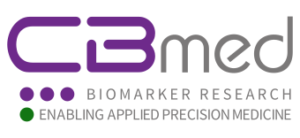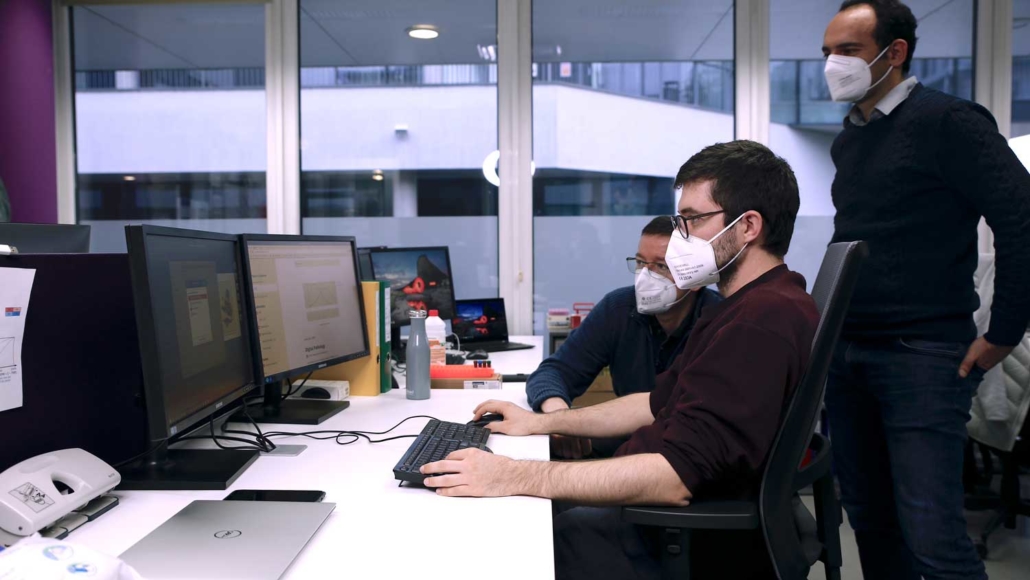FUSION Technologies at CBmed
At CBmed, FUSION is standing for the measurement of one or more samples of the same person with more Core TECHNOLOGIES, followed by a multi OMICS data science approach. This combination of data sets enables to validate new biomarker discoveries.
„CBmed combines“ – this has been the mission statement of the Graz-based center for biomarker research in personalized medicine from the beginning. Following this principle, the term FUSION (technologies) stands for the measurement of one or more than one samples from the same person with various core technologies, followed by a multi-omics data science approach. This approach enables various advantages and can be used for almost any biological scientific question. Most notably, it strengthens the evidence of new biomarker discoveries.
Two aspects must be taken into account: On the one hand, adding more technologies and combining the analyses is giving scientists the possibility to sharpen the view on the results. It could be compared to asking people on the street where a certain building is: The more people you ask, and they supposedly all know something about it and point you towards the same direction, the more certain you can be you are on the right track. With the combination, you will hit the target spot on.
FUSION and the Core Labs
Secondly, the selection and combination of technologies used is crucial for the answer that is being sought. Changes on the RNA level can be put in better context when looking whether and how accompanying pathways, for example in the metabolome change accordingly, or whether it shows up even at the macromolecular level. Following this approach, it is possible to find out exactly where the biological effect starts, where it acts, and when it stops. This often unravels new biological questions down the line.
FUSION technology can be applied to almost all areas and wherever a scientific, biological question comes into play. It could be analytical, descriptive or even experimental set-ups – at any point where there is a too complex research question, where looking at only one data set wouldn’t provide a robust enough answer. This is where FUSION technology would come into play, so basically all the CBmed CoreLabs – immunology, genetics & genomics, metabolomics, and digital pathology with multiplex immunhistochemistry – are used for a FUSION technologies approach. However, the CoreLabs and Technologies can also be used on a modular basis.
Data scientists at CBmed are examining relevant data to FUSION.
Challenges and chances for FUSION
Challenges remain: The quality of the result of the analysis is only as good as the data provided. This means: pre-analytics from very different sample types have to be on point and implemented with highest quality standards and robustness. When it comes to know-how, it is necessary to work with experts who have specialized knowledge in each single-omics area, but also a more holistic perspective, like that studied by systems biology. Finally, from the data science perspective, FUSION is a perfect example of the “curse of dimensionality” problem, where there are orders of magnitude more variables to investigate than samples available, aside with many missing values due to some technological constraints. This limits the range machine learning approaches can be used and can often be a limiting factor for robust biomarker discovery at the experimental stage. Due to the limited amount of samples available in multi -omics projects for biomarker discovery in comparison with the number of variables measured, Data Science plays a major role. Specialized analysis on each of the -omics platforms need to be performed, but also later combined in a way that generalizes well enough to move to the validation stage, where it is certain they do not simply overfit particular datasets.
FUSION is combining all areas at CBmed. The technologies and measurements are performed in Area 1 (Data & Technologies), Area 2 (Cancer) and Area 3 (Cardio Metabolic Health) are providing valuable medical and biological context to the research question out of their technical expertise. So far, CBmed’s most successful case is a study on Colon Cancer Stage 2, where a biomarker fingerprint to predict relapse in 5 years was identified using data from several -omics technologies. This fingerprint showed better performance and was more robust than biomarkers found using each of the -omics technologies independently.
For every research question, there is a close cooperation with scientific partners such as Joanneum Research, and the Medical Universities of Graz and Vienna. While Joanneum Research Health is the crucial partner for the metabolomics core technology, the medical universities provide valuable know how and add in with their experience. For research projects with industry partners, the scientific partners support the best solutions possible. Currently, there is an industry collaboration with ROCHE Diagnostics and Pharma to exploit the potential of FUSION for enriching decision support systems.
CBmed is using FUSION technologies to validate new biomarker discoveries.
.
Future projects and plans
When it comes to clients and customers, FUSION is able to unravel unseen aspects and blind spots of a scientific question, giving a more general picture than a single -omics approach. FUSION comes in when all the other resources have been tried, but not all scientific questions have been answered. Also, any customer trying to improve patient care with a more individualized approach is going to benefit from FUSION Technologies, because with multiple technologies looking from different angles to the whole biological system, it is possible to show a clear picture of what is happening in that exact individual. Then, a tailor-made therapeutic scheme can be planned and enforced – a true personalized treatment.
There are already plans to develop the FUSION approach further. As both discovery and validation studies for multi-omics biomarkers are very complex, we are exploring the idea of adding “in-silico” capabilities to Fusion. This means we would like to integrate existing scientific information (e.g. public -omics datasets), which would give us a hint of how much is known or how reliable it would be to start a specific discovery study, as well as to put our potential later validation in context of existing research. Being closely connected to the medical universities in Austria alongside with the biobank in Graz, which is the largest in Europe, and with our in-house data science know how, we are able to provide a one-stop solution for the customer.
The Author
Angela Jačan
CBmed GmbH, Project Leader FUSION Technology






